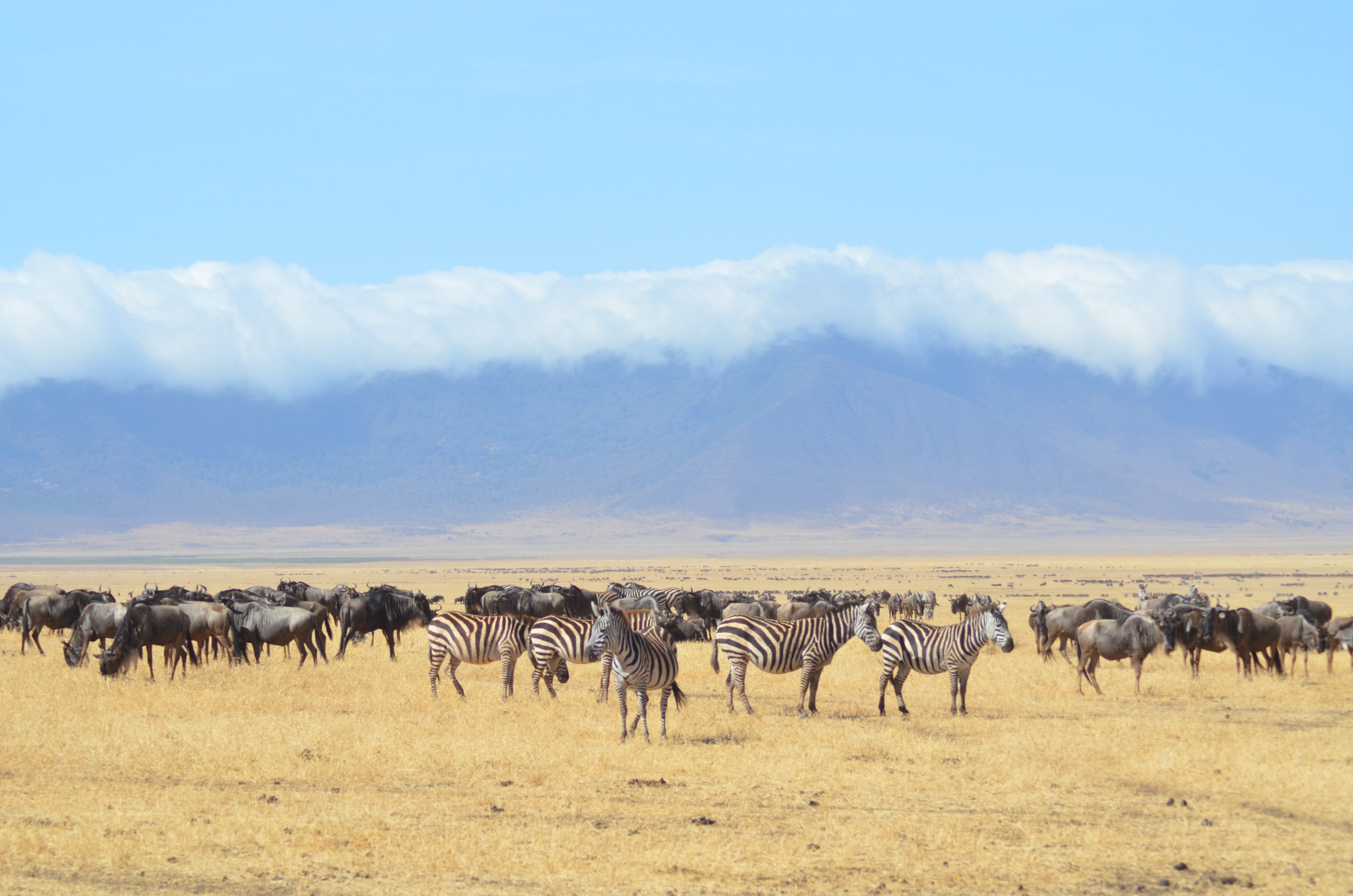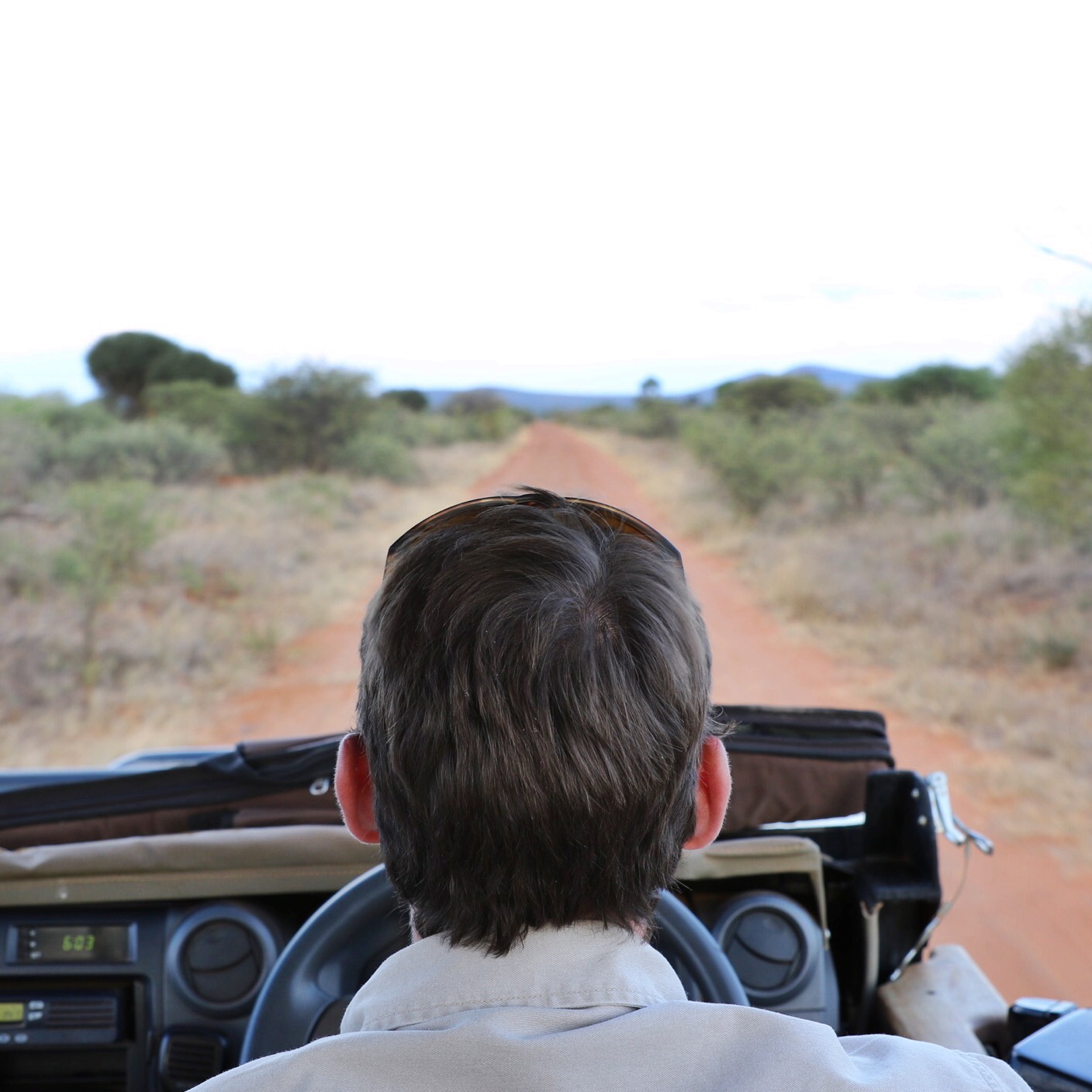Full Days on Safari
If you’re curious about Africa but realize you don’t really know what to expect from a safari, let me go through a typical day. Not every experience is alike, of course, but there’s generally a rhythm and a routine in a camp.
And it plays out about like this:
Early in the morning, you are woken with a “knock” and a lilting “Good Morning” by a staff member who delivers coffee or tea and a bit of food to wake you up. Wash your face and brush your teeth, dress in layers and head for the mess tent or dining room for a quick bite before boarding your vehicles. A camp may have a few different vehicles and each of them will head off in a different direction. The guide will often be driving but sometimes there will be a driver as well as a guide and possibly even a tracker who will sit on the front of the vehicle watching for game. The vehicles keep in contact with each other and the camp by radio in case they sight something spectacular or run into trouble.
Wild animals are generally creatures of habit and usually the guides around the camps have an idea where they might be at given times of day and seasons of the year, so they may seem like they are driving around aimlessly when they are really checking out typical spots where animals have been known to hang out. Even on the occasions when you don’t run into the one of the “Big Five” - lion, leopard, elephant, cape buffalo, and rhino - you can enjoy the immense quiet of the bush and the early morning light. After an hour or two, you may pull over for a pit stop and a cup of coffee and another bite to eat - often served off the back of the vehicle. Once everyone stretches their legs and takes care of business, you get back in the vehicle and track animals for another hour or two before heading back to camp in late morning.
After a bit of time to yourself, you’ll all get together for lunch in the dining room/mess tent or, in fine weather, outside. Usually lunch is a big meal with a few courses. Once done, you’re on your own for a few hours. Generally there are books on the local area or novels available as well as games. Often, a nap is called for - all that fresh air - and then it’s time to meet again for tea and cookies before heading out in the late afternoon for another game drive around 4 o’clock. After a couple of hours watching animals, you’ll halt again for a pit stop and, often, “sundowners” - drinks and hors d’ouvres - while you watch the sun set over the bush (oh, those African Sunsets!). Then it’s another hour or so driving as the light goes and the nocturnal animals come out to play and hunt. Often your vehicle will have a powerful spotlight and this is your chance to see some animals you might never see during the day.
“Few paradigms are fresher than safari life, which offers the sweet and novel pleasure of indifference to all things earthly outside camp, which is one of the most exquisite and soul-lulling pleasures a mortal can enjoy.
”
Usually you’re back at the camp by 7pm or so. Now is the time for a quick shower, clean clothes and a drink in front of the campfire before dinner. Dinner could be served outside (in a “boma”) or inside, and is generally lavish. Once done, everyone moves around the campfire for the rest of the evening - a review of the day’s sightings, and drinks and stories (directly correlated); sometimes the staff will sing and dance for the guests (and themselves!). When you’re ready to hit the sack, one of the guides will escort you to your tent or room. Once you’re zipped in, safe and sound, then that’s it for the evening. Generally, there will be some emergency signal that you can use in the night if absolutely necessary, but the animals know you are there and aren’t that interested . . . they’ll graze around you and you may hear them close by, but you are perfectly safe in your tent until morning. And, boy, will you sleep well . . . and then start all over again.










So, what will you see?
This differs enormously based upon your location, your season, and your luck. Generally, in the highly concentrated big game areas like the Serengeti in Tanzania, the Maasai Mara in Kenya, and the Kruger area in South Africa (there are many more), you’ll have a chance to see a variety of big game and lots of birds.
ANTELOPE
Within a day, you’ll be able to differentiate the many kinds of antelope - the main food group for the large carnivores.
LIONS
Lions are likely to hunt both day and night, and eat and sleep during the day - often in large groups that are easy to find. The dominant male of the pride eats first, then rests while the lionesses and cubs eat. There’s a definite pecking order at a kill with hyenas waiting for the lions to be sated, jackals after that, and finally the vultures to finish off the carcass.
ELEPHANTS
Elephants travel in herds composed of the females and youngsters and babies. Adult males are most often alone although when young, they may band together for a while. Very smart, ellies are often comfortable around camps and vehicles unless they’ve had bad experiences. They always need to be treated with respect.
CAPE BUFFALO
Cape Buffalo travel in big herds and are prevalent all over Africa. They graze quietly but can be dangerous if they feel threatened.
RHINOS
Rhinos have their own habitat and often can be found in small family groups or alone. The Black Rhino has been hunted almost to extinction (for its horns) but is making a comeback. They are incredibly powerful and really weird-looking!
HIPPOS
Hippos and crocs will haunt the rivers and streams. No swimming here. If you’re near water, hippos will often trample around your camp at night eating (they are strictly herbivores). They are surprising fast and agile. The crocs - well, they are Nile Crocodiles - some of the biggest in the world and a very ancient species. Real killers!
LEOPARDS
Leopards are the hardest of the Big Five to find because they are solitary, nocturnal hunters; sometimes, though, you’ll find them dozing in the branches of a tree, oblivious to your vehicles or your considerable camera clicks. They are loners but the cubs stay with mom for quite a while while she teaches them to hunt.
CHEETAHS
Cheetahs are often out in the open with their cubs or looking for their next meal. They sit in high places and wait for game to chase. Watching them hunt is a thrill, though they are often out-maneuvered by their prey and have to give up after a short, spectacular burst of speed.
All Good Things…
There are many variations to a typical day - instead of driving you may want to walk some days (with plenty of protection); there may be an opportunity for hot air ballooning or a visit to a local village or school; or there might be a swimming pool for a refreshing dip in the afternoon, or even a masseuse around. There might even be a shop at the camp!
But no day is ever the same and every safari experience is a new one. Some people go for that once-in-a-lifetime trip and have a wonderful time and are ready to go on to something and somewhere else. Some of us just can’t get enough no matter how many times we return… enough animals, enough sunsets, enough walks in the bush, well… enough Africa.
“Tomorrow is the first blank page of a 365-day book. Write a good one.”














